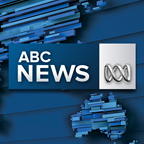
Posted
In an age when knowledge of the Bible seems to be fading, many Indigenous Australians claim it as an important game changer in their lives.
Among the 73 per cent of Indigenous Australians who claim Christianity as their faith — more than the general population — Max Conlon, artist and Christian minister from Murgon, Queensland, is not atypical.
"I guess in the inside I was searching for love. I was bleeding on the inside like nothing else. I wanted that, I wanted to hear it from my dad, I never heard it," says Conlon.
"Somebody invited me to church one day, so I went along. That day was meant for me. It was 'divine appointment'.
"The man was preaching that somebody loved me; my heart was popping — that he died on the cross. I had never heard that before.
"I gave my heart to Jesus that day, and a light switched on in my life."
 Photo:
Commissioned by Bible Society Australia for UBS Round Table Event 2017 (Supplied: Max Conlon)
Photo:
Commissioned by Bible Society Australia for UBS Round Table Event 2017 (Supplied: Max Conlon)
Max is one of 66 artists representing 41 language groups who have contributed their stories and their artwork to celebrate the 200th anniversary of Bible Society Australia, the oldest continuous organisation in the country.
The result is a large and lushly produced book, which Conlon has named Our Mob: God's Story.
The book represents an important shift in the thinking of Bible Society, which since its early days has been primarily devoted to distributing copies of the Bible and "spreading the word".
But as Bible Society Australia chief executive Greg Clarke admits, the languages of the heart are different for different people.
For Indigenous Australians, he says, pictorial forms of communication are embedded in their traditional art.
"There's been a real iconoclasm in Christianity that sees the picture as less valuable than the word," Mr Clarke says.
"Some of the metaphors for Jesus and God are word based, but we can't limit ourselves to those things.
"There are just so many resources God's given us to understand Him and the world, and a lot of those things are visual resources or audio resources.
"We're crazy if we limit ourselves to one form of communication. They all play different roles."
With the Bible Society celebrating a milestone, Mr Clarke says there is a need to be honest about the mistakes of the past.
The missionaries who introduced Indigenous Australians to the Bible were also involved in suppressing Indigenous languages and separating children from their parents.
"It's something we're deeply ashamed of as a nation, and certainly as a Christian church, that we have let people down in many places and many times," Mr Clarke says.
"We need to face that and be honest about that, and having done that, to be able to explore some of the good things that have happened as well, and learn from that."
One of the lessons learnt is the importance of using "languages of the heart" to communicate the Gospel.
Bible Society Australia is working to produce translations of the Bible in the very languages that were once suppressed.
But it's a long and painstaking process. The only full translations are the Kriol Bible of 2008 and the Yumplatok (Torres Strait Creole) New Testament of 2014.
As communities wait for translations in other languages, visual art has an important role, says Safina Stewart, a young Bunjil artist from Mabuiag Island, Torres Strait and Wuthathi country, Queensland.
"I am convinced Aboriginal art is an extremely effective way of sharing the Gospel, both with non-Indigenous and Indigenous people," she says.
"I've seen how powerful it is to tell stories to people who have no idea about Jesus and Indigenous culture."
Topics: christianity, religion-and-beliefs, community-and-society, painting, visual-art, arts-and-entertainment, murgon-4605, qld, australia









 Add Category
Add Category


